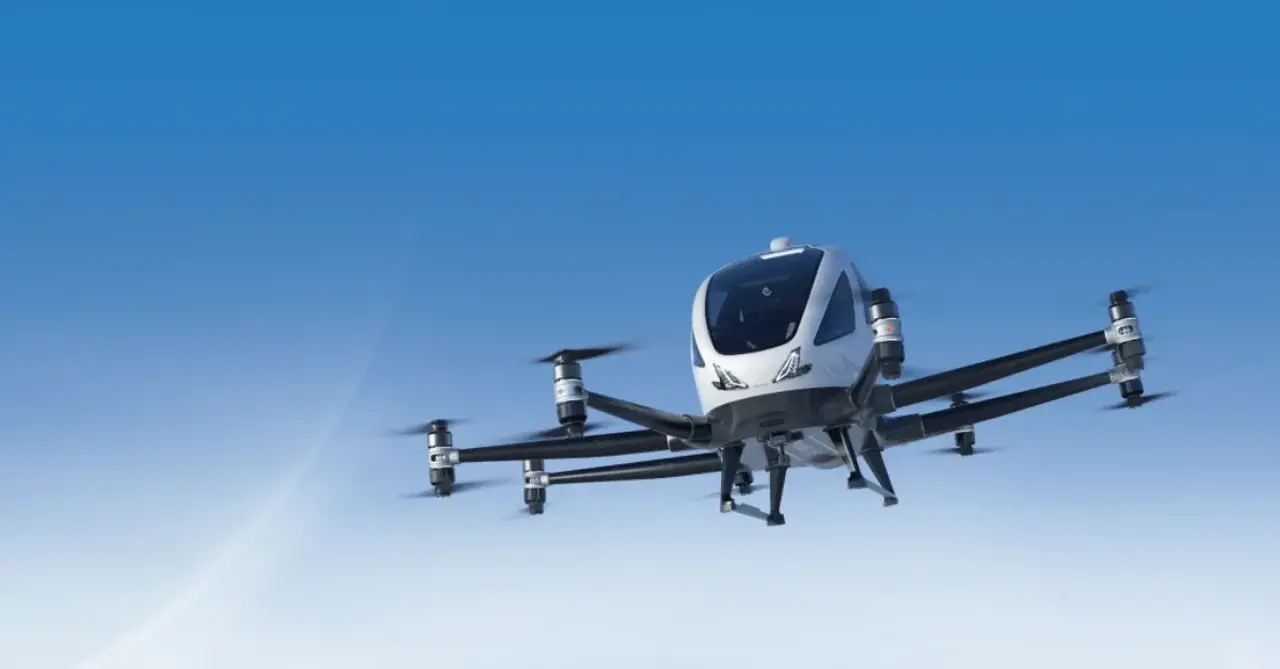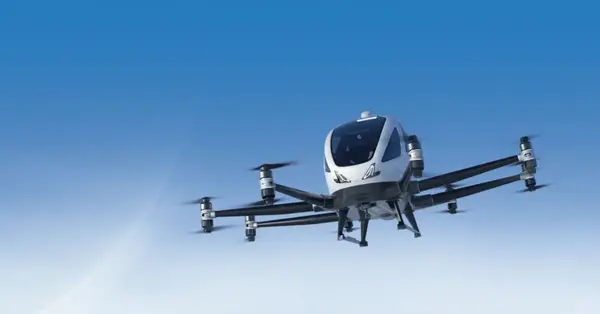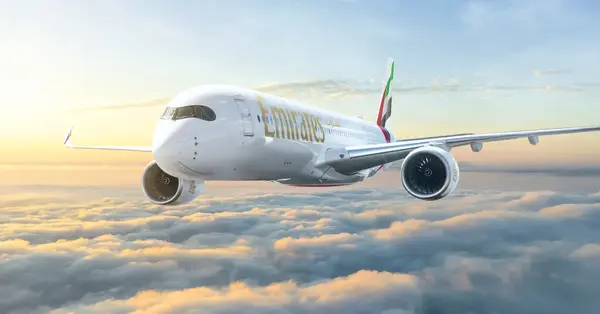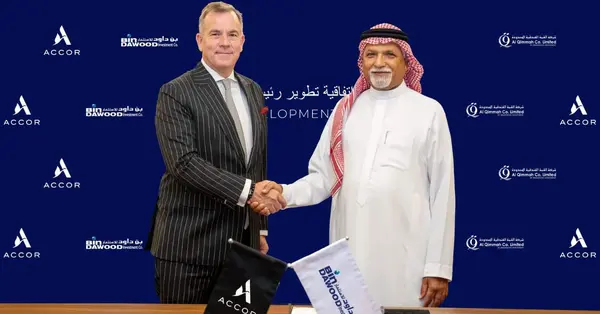You are viewing 1 of your 2 free articles
Saudi Arabia to launch flying air taxi service this year
Kingdom will be first in region to operate autonomous aerial vehicles
Saudi Arabia is set to become the first country in the region to operate a flying taxi service, as local tech firm Front End partners with Chinese manufacturer EHang and Cluster 2 Airports to roll out autonomous aerial vehicles later in 2025.
Under the agreement, EHang’s self-flying aircraft will operate from the 22 airports managed by Cluster 2, offering services for passengers and logistics.
The introduction of air taxis is expected to more than halve travel times in the kingdom.
The first model to take to the Saudi skies will be the EHang EH216-S, a fully electric, two-seater air taxi that operates without a pilot.
The partners plan to expand operations to create a nationwide network of air taxis connecting airports across the kingdom.
EHang’s autonomous aerial vehicles have already been certified for operation in several countries, and Saudi has been steadily preparing for their introduction.
The kingdom successfully completed its first unmanned air taxi trial in Makkah in June 2024, with the General Authority of Civil Aviation (GACA) launching its Advanced Air Mobility Roadmap two months later, setting out how the technology will be integrated into Saudi airspace.
Majid Alghaslan, CEO of Front End, said: “We are not only testing concepts but certifying and deploying Autonomous Aerial Vehicles (AAVs) across the kingdom.”
RELATED:
UAE leading the way in travel technology, reports WTTC
Middle East airlines to be most profitable in 2025
Introducing the 2025 Cruise Insight Report
Designed to offer an alternative to traditional helicopters, air taxis are suited for short urban journeys and hard-to-reach destinations.
While initial costs may be high, they are expected to fall as adoption grows.
The fully electric EH216-S can travel up to 35 kilometres on a single charge, reach speeds of 130 kilometres per hour, and recharge in about an hour.
The range would allow passengers to fly from Riyadh’s King Khalid International Airport to the King Abdullah Financial District, or reach the offshore island resort of Shebara at The Red Sea destination, approximately 25 kilometres from the mainland.
Although these vehicles will initially operate from airports, air taxi networks are expanding beyond them.
Across the GCC, countries are developing infrastructure to support the new mode of transport, with the UAE currently constructing its first vertiports at Dubai International Airport, Downtown Dubai, Dubai Marina and Palm Jumeirah.
Also in the UAE, Ras Al Khaimah Transport Authority has signed an MoU with Joby Aviation and Skyports Infrastructure to launch an air taxi service connecting Marjan Island – home to the upcoming Wynn Resort – with Dubai by 2027.
For more information, visit ehang.com and gaca.gov.sa
















